For anyone who has lived (or still lives) in the countryside, the terms livestock guardian dog (LGD) and livestock herding dog (LHD) are probably familiar. What these two terms refer to are the two types of working dogs one might expect to find on a typical working farm.
The terms indicate what role the dogs play, though both livestock guardian as well as livestock herding dogs may simply be referred to as sheep dogs or working dogs.
Dogs of all shapes and sizes have enjoyed the special distinction of man’s best friend for thousands of years, but many modern pet owners don’t realize the true potential of their canine companions.
Whether they are acting as vigilant guardians, aiding in the location and management of livestock, assisting in search and rescue, or laying down their lives to defend their human master, a well-trained dog can be worth its weight in gold.
Indeed, on working farms and in rural communities around the world, livestock herding and livestock guardian dogs, the quintessential working dogs, retain immense popularity to this day.
The best livestock herding dogs and livestock guardian dogs come from specific breeds that have been bred and raised to perform certain tasks, as in the case of the Australian Koolie (a herding dog) breed or the Great Pyrenees (a guardian) breed from France. As their names distinguish, LGDs and LHDs have distinctly different purposes when working with flock or herd animals.
Livestock herding dogs are bred, raised and trained specifically to work with a farmer or shepherd. As such, these breeds generally have an abundance of energy, are highly intelligent, and are really at their best when they have a job to do or a lot of mental stimulation. The effectiveness of a LHD stems from the fact that it uses predatory behaviors (ex. nipping at the heels, moving fast, barking, circling, etc.) to herd prey animals by bunching and flocking.
Some of the most renowned breeds of livestock herding dogs are:
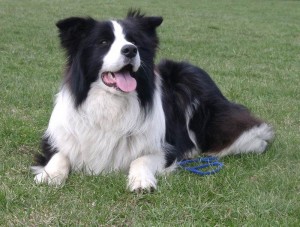
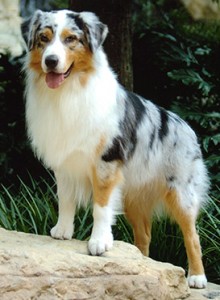
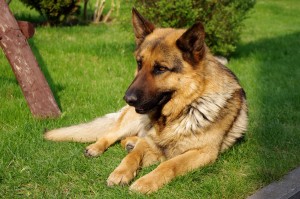
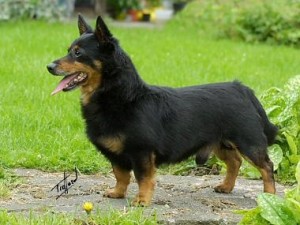
Typically trained for use with sheep, cattle and goats, livestock herding dogs can also be used (with adequate training and supervision) to handle chickens, ducks, geese and other fowl and smaller animals as well as pigs and llamas.
In addition to their skill and usefulness as working dogs, many LHD breeds also make loyal family pets, often with an innate, super-alert guarding instinct to boot. Unfortunately, because of their more predatory instincts, LHD aren’t as well suited to being left alone or otherwise unattended with their flock or herd, as they may slip up and eat their charges.
That’s where LGDs come in. With their more relaxed, patient temperaments, well-trained livestock guardian dogs can be left unattended amongst your sheep, cattle, goats or flock of fowl. Indeed, it’s what they have been bred and trained for, because the main purpose of a LGD is to protect your herd or flock from other predators by staying with them at all times.
A good LGD will fight off predators that may prey on your livestock, but in many cases farmers with LGDs among their herd or flock find that they have very few issues with predators.
This is because predators are known opportunists, so once they’ve identified that your LGD (another predator as opposed to a prey animal) has staked out its own patch of territory with your livestock, the predators will look for easier, unguarded prey elsewhere. This makes LGDs ideal for use when you have free range cattle, goats, sheep or other free-roaming animals.
Good livestock guardian dogs can also protect your stock from theft by strangers, though humans may prove more lethal to your dogs than predatory animals if they should target your stock. In any case, some of the best livestock guardian breeds include:
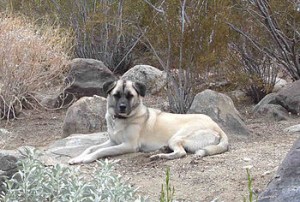
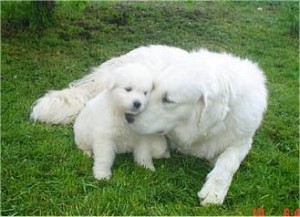
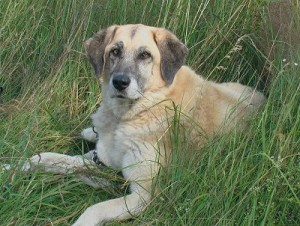
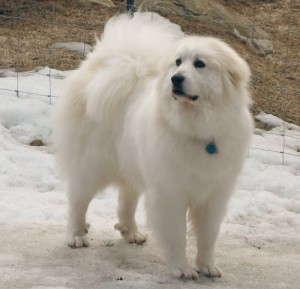
It is also important to remember that, in addition to the training that a good dogs needs to become a great herder or guardian (but particularly a herder), your flock of sheep, herd of goats or other livestock to be handled must also be trained to respond properly to the dog. Ornery sheep, aggressive rams, cattle and even pigs that have never been handled by a herding dog or been in the presence of a guardian dog will need to be acclimated to the new animal.
Another important distinction between livestock herding breeds and livestock guarding breeds has to do with their ability to learn, and willingness to follow, commands and orders from their owner. Traditional herding breeds are, by necessity of their job and the fact that they must respond swiftly and accurately to their master’s commands, generally extolled for their obedience and ability to learn new commands and tricks quickly.
By contrast, most livestock guarding breeds, especially those hailing from more ancient lineage, are reputed for their stubbornness, their independence, and their general sense of autonomy and even aloofness towards the human members of its pack.
As opposed to being stupid or particularly disobedient, it must be understood that livestock guardian breeds are actually quite intelligent and have been specifically bred and raised for their capacity to work with livestock wile unattended.
When it comes down to it, while there is some training provided by the owner (and the older dogs if you have older LGDs working your stock), most of what a good LGD does stems from instinct and good breeding. Since these dogs have traditionally been left unattended with the stock, often for days at a time with little or no contact with their shepherds, it is important that they be able to make decisions on their own without relying on the orders of their master.
Additional Notes & Resources:
Video first seen on Bob Hinson
– this is a good video of a pair of sheepherding border collies in action in Scotland.
Video first seen on Conservation Media
– here is a nice, short little video that showcases several breeds of livestock guardian dogs and some basic details about their purpose.
This article has been written by Gaia Rady for Survivopedia.


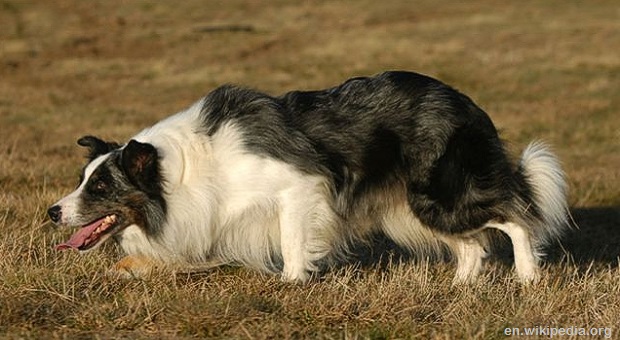

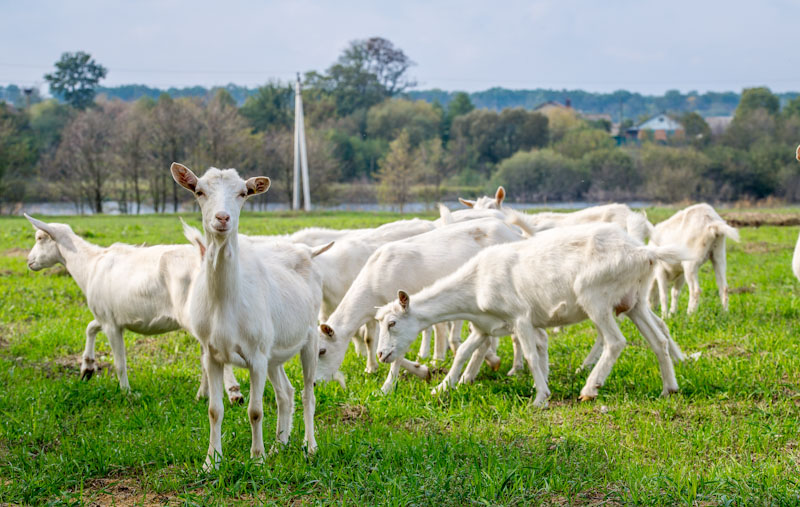
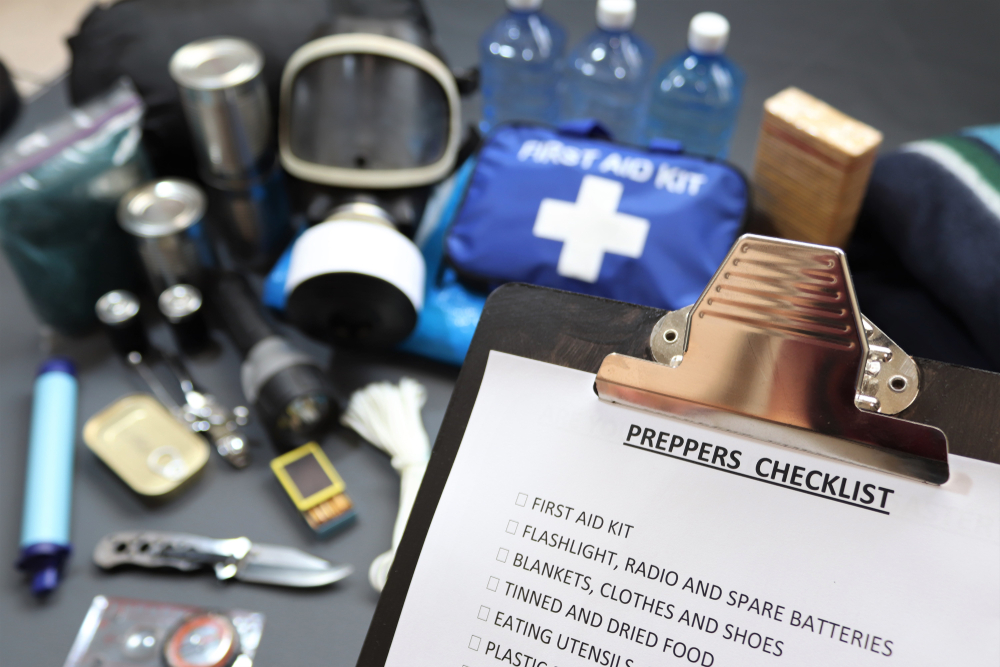
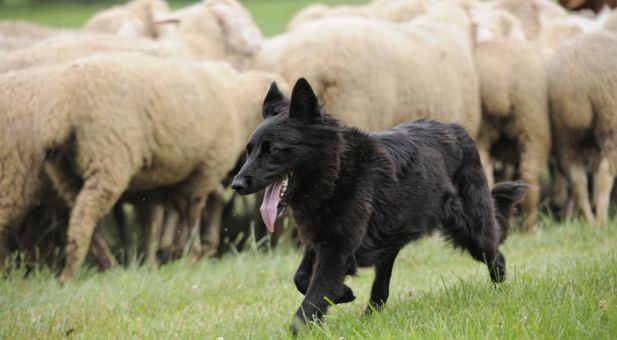
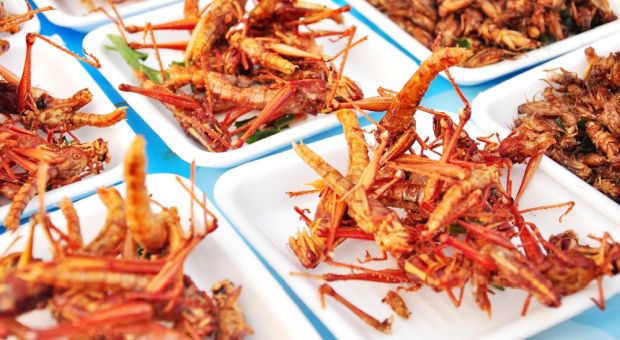

John | August 9, 2013
|
Best dog for protection is simple
South African Boerboel ! Enough
Said!
M. Sean Williams | December 21, 2014
|
for a bit over a dozen years I bred and raised alpacas. I would avoid Anatolian Shepherd and Akbash for LGD, and I would not consider a Kuvasz unless you have a good bit of acreage (35 or more) since they become aggressive if they feel confined. The best LGD is (in my opinion) a Great Pyr. They also make a pretty good ‘house dog,’ but remember that they shed (as do all double coated dogs) with great enthusiasm. You can card and spin the hair. Knew a fellow in college who’s girlfriend made him a sweater from wolf hair (her dad raised them in one of those large rectangular Midwestern states). Whenever he wore it, all the dogs in class gave him a very wide berth. (I know – I date myself … we were allowed to bring dogs to class back then; unless the dog acted up, nobody said anything).
Also, buy your LGD from a farm (as opposed to a breeder) if possible. Really, I don’t care if the Great Pyr on my place is too small for “breed standard,” but this would have been a big issue for a breeder, as opposed to a farmer who also breeds dogs. Additionally, a puppy from a farm will have some experience around livestock, which is a big deal if you want them to guard. Try to get a dog from a farm with the same or similar livestock to your own.
Since we got the great Pyr, we have not lost so much as a chicken, despite a predator load which includes (that I know of, and there may be others): coyotes, feral fogs, raccoons, opossums, mountain lion, the neighbors *&%ing beagle, foxes, badgers, owls (all three arieties), two types of hawk, and the neighbors thug children.
One big vote for Great Pyr!
Richard | January 8, 2015
|
The German shorthaired pointer was bred as a utility dog which means that the dog was meant to preform a verity of functions. This is a plus in the ability to survive in a number of situations. In the united states the handle pointer was given to this bread because there is no classification in the AKC for utility dog. This dog can do it all, provide food, protection, and carry a load, although most are not viscous, they don’t miss much and will sound the alarm if something out of the ordinary is going on.
Wade | August 9, 2013
|
I know the range of the article was not meant to be too broad.
Large dogs eat quite a lot more than small dogs. So a dog in the 50 – 120 lb. range should be considered along with other family needs. Suppose you raised chickens. A Great Pyrennes would not be appropriate. But the Havanese dog was bread to herd and guard family flocks and they are no bigger than a male tabby cat.
I have never owned a Terrier of any kind but they also have a reputation for guarding and killing rats; also for only barking when it is something important. My friend’s terrier, when I knock on the door of the home, barks explosively and in the home the sound is about deafening. So I think Scotties, Sealyham Terriers, Havanese also should be considered the economy model of dogs that can really be useful in a home with a flock, feed stores or that just need an alarm dog for strangers. Squirrels can do an awful lot of damage to feed stores and these little terriers are tireless at focusing on vermin.
jan meyers | August 13, 2013
|
I agree, terriers are excellent, intelligent, and mostly under valued. Both my Medical Alert Service Dogs have been Manchester Terriers. Manchesters are always black and tans, easy maintenance, short coats and the calmest, quietest of the terrier breeds. Excellent hunters, April also herds sheep for fun, April is small, a little over 15 lbs and at 12 yrs old, retired. Liberty, is active duty, a little larger at 22 lbs and with a heavier coat, she is from Canada, she loves the water and cold weather, although I wouldn’t take her out too long in freezing weather. Both of these dogs can feed themselves catching small game, they could feed me too, I just need to learn how to clean squirrels!
I had Great Pyrenees when raising children, wonderful dogs, belling (barking) will always let you know where children are playing, great calm dogs, that provide intelligent discerning protection. Grooming a must, could use fur from dog’s coat for weaving. Pyrs eat no more than an adult Cocker Spaniel. They are easy keepers. Unfortunately large dogs only live about 8 yrs, small dogs 14 yrs or more.
New pup is a small Aussie Shepard, only 15 weeks old and rounding up the cats. He is from working stock and showing great aptitude while training to become my last Service dog. What ever dog you get, try positive training or what is called “clicker” training, you will get a smart dog that thinks and solves problems. And honestly, if you hit or jerk your dog around– the dog will never trust you.
thundercloud | November 14, 2013
|
With due respect, not all large dog breeds eat a lot. Many DO eat much until they grow out of their juvenile stage, then the amount drops considerably. Depending on what meat animals you’re raising DOES make a difference. Sorry, this is where checking out the breed DOES make a difference as does knowing what you expect from the breed.
Terriers are land dogs. They were bred to go to ground and hunt out small animals underground. While they will alert well, I want a larger dog too. Actually my ideal is a small dog for alert and possible going to ground for small animals, middle size for protection AND for other types of work, AND a large dog for intimidation and protection. Three sizes work well as a pack with the owner being the leader. Just know the breed before you commit and know thyself too.
Susi | April 2, 2014
|
Actually The proof is in the pudding. As long as man bred for fioctunn and ability in any given arena NO genetic diseases were passed on. Before you say someone’s statement is false you might want to do research on the subject before you make that assumption. Genetic diseases in dogs were born with the dawn of beauty pageant breeding where no ability other than looking pretty was demanded. Common sense will tell you that any animal bred for PERFORMANCE has to be healthy.
erin | August 9, 2013
|
I have a male Bullmastiff and a female pitbull and my believe their offspring is the best for family protection. very loyal and no excessive barking
Shane white | August 9, 2013
|
You can use the Bill Mastiff in place of a horse for plowing or riding as well.
jan meyers | August 13, 2013
|
Are you expecting the female Pitbull to deliver Bull Mastiff puppies’ heads without veterinary help?
thundercloud | November 14, 2013
|
the female can be used for pulling a cart and other forms of work, once trained, they need to work.
Doc | August 9, 2013
|
I would recommend the National Dog of Texas-the blue, brown , or yellow Lacy. Named for the Lacy brothers who 120 years ago bred a Texas ranch dog for herding, security, and hunting ferrel hogs. The crossed a collie, with a greyhound, and a wolf. They are fearless, smart , fast, territorial, and protective. It is said that the role model of the famous Mason, Texas tale, Ol Yeller, was a Lacy. Mine is 35 pounds and has brown short hair, white feet and chest, and yellow eyes. I have seen her chase and bring down a full grown deer and crunch an armadillo’s spine in one bite.
Tonia | August 9, 2013
|
One breed of livestock herd dog that is commonly overlooked and is not a popular well known breed of dog is the BOUVIER DES FLANDERS
The Bouvier is one of the best all around protection and working farm dogs around ! They are fantastic with children and naturally weary of strangers making these dogs some of the best protectors of family, farm and homes ! Their temperament is kinda laid back and not high energy bouncing off the wall, gotta have something to do ! They are content to lay outside or in the house and survey the grounds. They like to
“keep an eye on things”. But let someone or something that doesn’t belong at your house or farm ….. !!!
These dogs have the potential to take down large livestock and if trained properly can aide in hunting. They pull carts and sleds and are very adaptable to all kinds of weather. Their double coat protects them from inclement weather and extreme cold and freezing temperature as well as extreme heat.
I am a breeder of Bouviers and live in Alaska. I work my dogs in herding and have shown some of them in AKC dog shows.
If you are considering an all around survival, work and protection dog you should go on line and look them up. They will speak for them selves. There are a multitude of breeders for work and show which in my opinion is no difference in the dogs abilities. They are one if the few breeds of dog bred to maintain the purpose of their jobs. So just do a little research and see what you think. I know when shtf I have one of the best resources I can find in my arsenal !
jesse | August 10, 2013
|
Dachshund both full size and mini. Have a stronger sense off smell than a bloodhound so great for tracking. Little but don’t know it will go toe to toe with a badger. Great hunters, can be trained to herd, good watch dogs too. Are in working dog class. Fiercely loyal.
Stan | August 13, 2013
|
I have owned several breeds and have found that Siberian Huskies suit my needs. Gentle but very protective of my wife and small children. They can be trained to do just about anything but of course everyone has a favorite breed that may be needed for their specific purpose, this is MY favorite.
Suez | August 2, 2015
|
Beautiful dogs, but they like to kill birds an animals…once they get the taste, kiss your flock or herd goodbye!!!
Heather | August 27, 2013
|
Nice article! Be aware that some of the dogs mentioned can have scary aggression problems if not properly trained and socialized. Always research the breed and talk to breeders to find out what is best for you and your lifestyle.
Another smart herding dog is the Australian Cattle Dog. They can be stubborn and are one of the breeds where socialization is a must. They’re brave guard dogs, though. My Sabrina was the sweetest dog I’ve ever had, but she didn’t like strangers at all.
I’m quite surprised that the Catahoula Leopard Dog (from Louisiana) wasn’t mentioned. Not only can they be used as hunting dogs, herding dogs, search and rescue dogs, guard dogs, and police dogs, some are also used as service dogs for the disabled. Of course it depends upon the breeding lineage and individual temperament, but the ‘houla is an incredibly versatile dog when bred, raised, and trained properly. They are used for everything from hunting boar to doing agility. They are one of the smartest dog breeds, but aren’t usually on the “list of smartest dogs” because they’re still considered a “rare” breed, even though they can be found across the U.S. and around the world.
My female Catahoula is from a pet line, so she’s less energetic than the male I had who was from a hunting line. She is an excellent guard dog because she can hear things up to a mile away that I can’t hear, and she’s incredibly brave. But, due to her guarding nature – and the fact that many Catahoulas are wary with strangers – I will be getting a Golden Retriever male to be my service dog for later.
walt | August 29, 2013
|
No one mentioned the Poodle. LOL!
I like the Blue Heeler as well. Very smart and active as a herder as well.
Clay Coonce | October 16, 2013
|
I am emotionally hurt that my Blue Heeler was left out! He’s my second one. Amazing cattle dog. I sold my first one when I sold my ranch in Utah and worked international for 6 years. I’ve got another one now on my Prepper farm in Texas.
He’s amazing and loves everyone he knows, however, if he don’t know you, watch out. He protects my goats and 2 cows and keeps them well in line. He took on a feral hog that was rooting up near my chicken coop. Chased it off and I trapped it the next night. Not bad eating just make sure you know what you’re doing when preparing and cooking it. Made some great jerky.
grintch | November 7, 2013
|
Isn’t a blue heeler the same as an Australian Cattle Dog?
Great dogs, come as blues or reds.
Neil | August 30, 2013
|
If you have to have rely on an untrained guard dog, then the Kangal wins every time. Highest bite force of any dog on earth and extremely quick to attack anything perceived as a threat to it’s owner’s or herd. For trained protection animals in my opinion nothing beats a pair of Akita, they naturally watch for any possible threat and guard you constantly, they are silent except in response to real threats, have no smell and are nearly as clean as cats. They can be too quick to attack, but sometimes that’s a good thing they are very focused and extremely loyal. Untrained in protection though all they’ll do to a human attacker is tear their clothes off, but that’s true of most untrained dogs, they have to be taught to grab some meat on human enemies. Plus Akita look like harmless Teddie bears, they are if they consider you part of their pack, they are much heavier than they look males can reach 120lbs or more and they won’t draw as much attention to you as any other breed so they are naturally tactical animals.
Mary | November 9, 2013
|
We have an Akita/Lab and he is
the sweetest thing on four legs,
unless you’re trespassing, or
a stranger approaching aggressively.
Then you get the full attention of 150
pounds of muscle, teeth and a roar
of a bark. You quickly get the picture.
No fooling around here. Next? Then
resume the sentry position. Back
to surveying his kingdom. We love
this guy! Definitely feel safer with
him watching our backs. And yes,
he does look like a Bear, but not
a “Teddy”. A big ole Black Bear from
northern Calif.! 🙂
Grizzly!
Carmen | September 2, 2013
|
I am curious are there breeders that are breeding dogs for people with a prepper type need?
tom | October 28, 2013
|
check out the FILA mastiff part bloodhound/German bulldoggee/English mastiff careful they will bite a stranger.
Austin | October 30, 2013
|
I like your thoughts about the Garde Dogs but the Dogs you showed are preditor agresave, I want a Dog to be people agresive as they are the ones that are going to steel your Money,food,guns,LIFE not so much our 4 laged ones ok so what do you have info wise about that ? Thanks in advance.
Pingback:Survival Defense: 5 Spooky Pets for Home Protection | May 12, 2014
|
Pingback:Off-grid Defense: Spooky Pets for Home Protection | TheSurvivalPlaceBlog | May 14, 2014
|
theresa | June 9, 2014
|
I have two Border Collies, male and female 30 and 60 pounds they are fed once daily and a treat before night. They watch our chickens, geese, goats, sheep and help with my handicapped husband. These great dogs are my right hand and if someone should come that needs not to be here our male will gladly help them find their way out. I have had boarder most of my life and I am over 60 so I am in love with them. Thank you
Lou Goode | July 5, 2014
|
I can not express how impressed I am with the wealth of information I read from Survivopedia. I am greatful I have this information to record and remember for now and for my future. A greatful thanks to all who contribute their knowledge.
Cheri | August 15, 2014
|
I have a Catahoula leopard dog, probably the best dog I’ve ever had, except for one dog I had several years ago, a yellow lab/German shepherd mix. She was an awesome guard dog! My Catahoula is of the smaller line so she is not as aggressive as the lab mix I had. The Catahoula is loud and fast!!
Holder lies | August 21, 2014
|
Research Hanging Tree dogs, they combine australian Shepard, border collie and catahoala leopard. Just awesome dogs, will work till they drop to please you, my 6 year olds best friend, next to Rosie the chicken!
Kitty | January 19, 2015
|
I have two Australian cattle dogs, a Catahoula and a Blue Tick Coon Hound. All very protective of my little farm.
Suez | August 2, 2015
|
Has anyone ever had a Airedale? I’ve heard they very loyal and don’t shed stink, which is a plus for us gals doing housekeeping…LOL Do thy guard? I would think so??
Pingback:Survival Dogs: How To Start And Build Your Kennel (1) | August 4, 2015
|
Pingback:About - The Prepper Dome | October 28, 2015
|
Pingback:Adopting Dogs As Survival Animals | Survivopedia | March 9, 2018
|
North Korea | April 3, 2018
|
This article was really engaging while being stirring.
I found the composition very useful. Continue with the good work!
I would like it if you would visit my blog about DPR Korea.
Sabina | April 3, 2018
|
Adriana, thanks a lot for our kind words and congrats for your blog 🙂
Pingback:How To Make Survival Foods For Your Dog | Survivopedia | April 27, 2018
|
Petworlds | November 24, 2018
|
I’m impressed to see your site. You did a great job on this site. I love all dogs. And Thank you for sharing this information.
pet animals | March 14, 2022
|
The Grey parrot (Psittacus erithacus), also called The Congo grey parrot and African grey parrot is an Old World parrot in the family of Psittacidae.